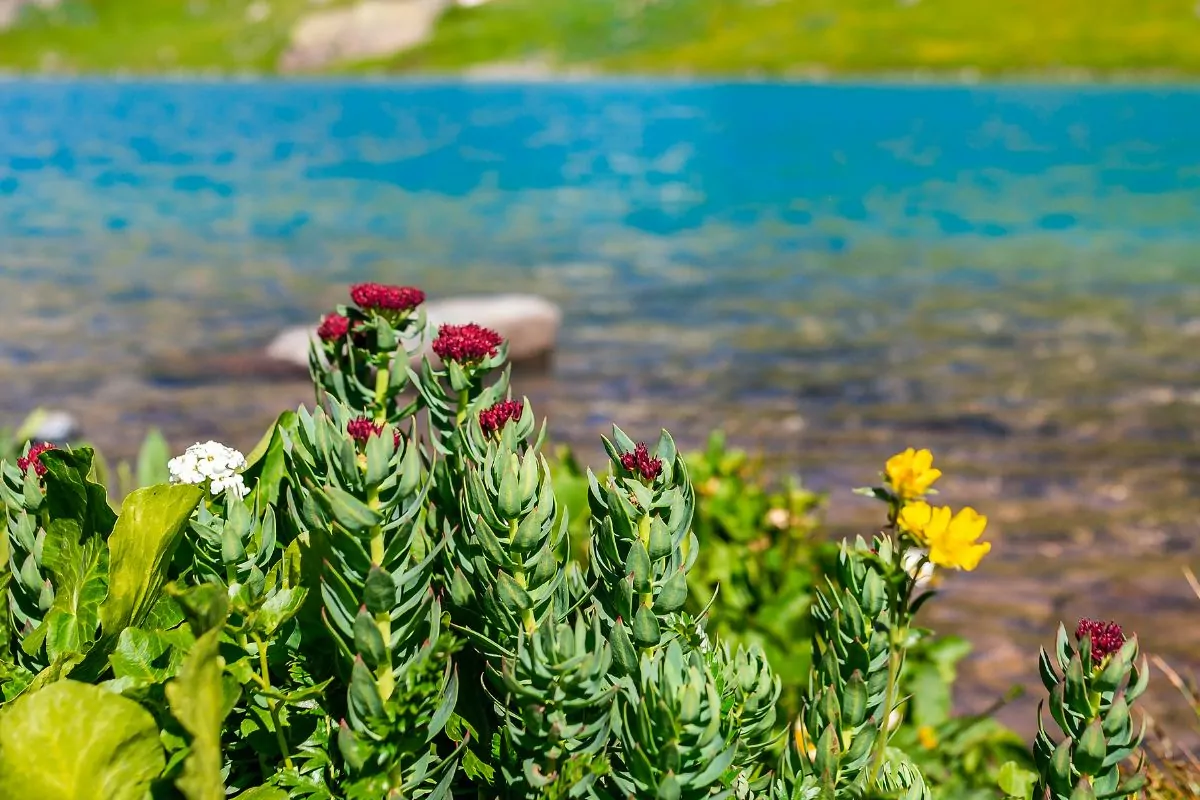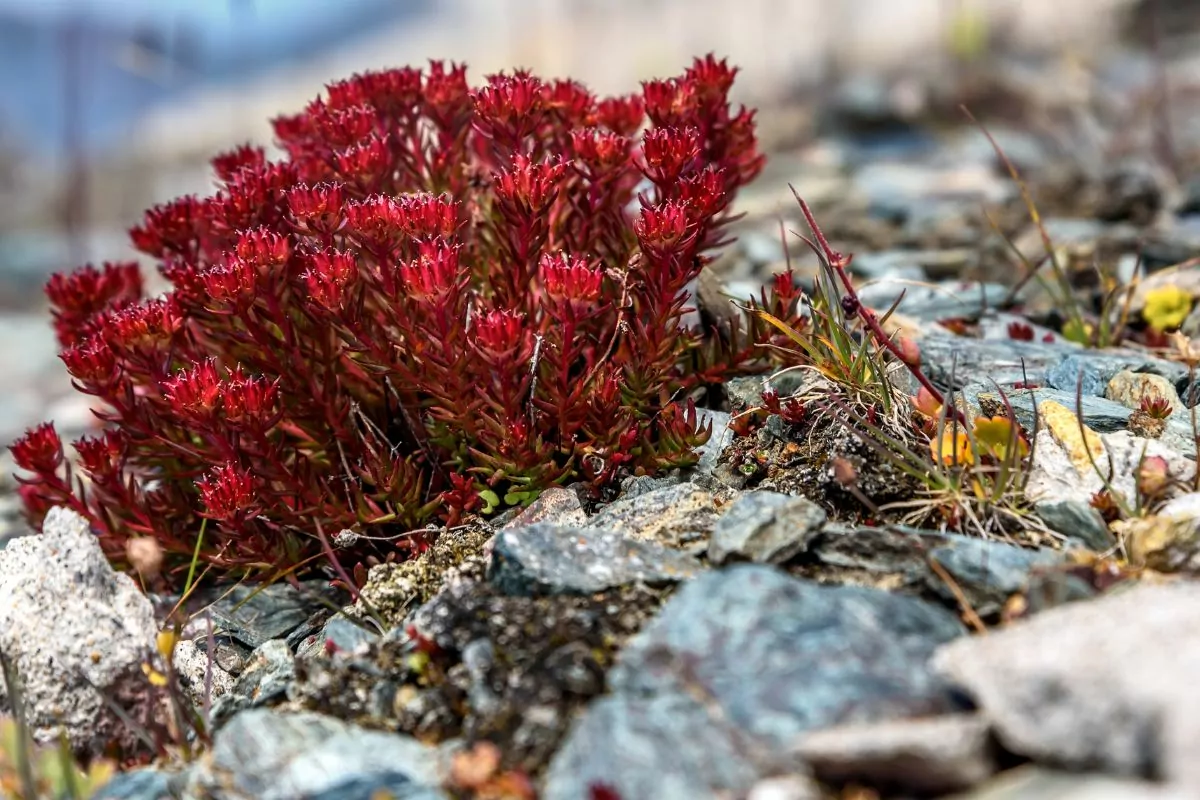If you have ever been for a walk through the mountains, then you might have seen a very distinctive red flower with tightly packed buds that are focused on the center of a large cluster of bright green leaves.

Well, you might just have spotted the very rare and very unique King’s Crown flower.
The King’s Crown tends to cluster close together, which creates a carpeted effect that will add some vibrancy to the drabbest garden. This plant is edible, but you should avoid consuming it, as there can be some side effects.
So, what else is there to know about this flower? When does it bloom? How long does it take to grow? What climate can you usually find it in? Well, we have all the information that you’ll ever need on this plant, so let’s get stuck in!
What Does The King’s Crown Flower Look Like?
This is a deep red plant that stands out against the gray and rocky mountains that it grows in. It is related to the Queen’s Crown flower, although the latter is a lot pinker than the King’s Crown plant.
This will grow to around 30 cm, coming with green and pink leaves underneath that curl outward and flick upwards. This has very thick stems, which allows it to flourish in the harder mountain conditions.
When they bloom during the warmer weather, they get deep red fringing on the edges of the leaves. This usually lasts until the wintertime.
This one comes with petals that are fleshy and range from red to deep purple. There are relations to this flower that are colored yellow and orange.
This can produce up to 50 flowers in one single cyme. Each leaf of this plant can reach 2.5 inches in length.
What Is The Scientific Name For The King’s Crown Flower?
The Latin name for this flower is Rhodiola integrifolia, branded as part of the Rhodiola genus in 1753.
It has been renamed twice, once in 1772, when it was named Sedum Roseum and then given its final name in 1832 by Constantine Rafinesque.
‘Integrifolia’ is the Greek term for ‘complete foliage’, which is a reference to the full leaves and the buds that cover this plant during the height of its blooming during the summer.

Where Can You Find The King’s Crown Flower?
This flower can be found in the alpine and subalpine zones of the more mountainous regions in the west of North America. It can also be found in northeast Russia and parts of the Kamchatka peninsula.
They have been photographed in full bloom in the Rocky Mountain National Park. They are often found in dense colonies where they can hold a lot of moisture for a long period.
They usually grow in the type of moist soil that you might find in a meadow. You can also find them in any area where there’s moisture.
This flower is very closely related to the Roseroots plant, which can be found in parts of Northern England and Scotland alongside sea cliffs. They can also be found in Snowdonia in Wales.
There are numerous subspecies of this plant, most of which originated from sea cliffs that were covered in glaciers. This flower survives in caves where cold air and moisture are blown through narrow passages.
When Does The King’s Crown Flower Blossom?
This flower usually blooms during July at the height of summer when the weather is very warm and it is exposed to a lot of sun. It will bloom throughout the summer season right the way through until the end of August.
During the end of their growth, they will change from vivid red to orange and then yellow. The stems will grow greener during the summer season and then start to fade as the winter sets in.
How To Take Care Of Your King’s Crown Plant
The King’s Crown can be very easy to take care of as they often grow in very harsh climates. This plant requires a lot of light, especially in the morning, so make sure they are placed close to bright and sunny windows.
This plant likes a lot of moisture, so you can either choose to water it or spray it with a fine mist a few times a week. This is a succulent, so it can retain a lot of water for a long period, so you don’t need to water it more than twice a week.
Conclusion
We hope that our guide to the King’s Crown flower has given you all the vital information that you need about this plant.
If you are going to raise this plant in your home, make sure that it gets plenty of light at all times, as it does not tolerate low-light conditions very well.
- Interesting Flowers That Start With A - July 21, 2023
- Interesting Flowers Beginning With H - July 21, 2023
- 14 Fascinating Flowers That Begin With C - July 20, 2023
